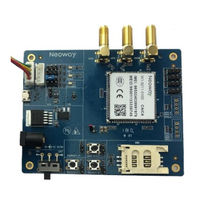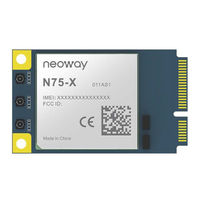Neoway N75 Manuals
Manuals and User Guides for Neoway N75. We have 3 Neoway N75 manuals available for free PDF download: Hardware User's Manual, Product Specifications
Neoway N75 Hardware User's Manual (95 pages)
Brand: Neoway
|
Category: Control Unit
|
Size: 2 MB
Table of Contents
Advertisement
Neoway N75 Hardware User's Manual (92 pages)
Brand: Neoway
|
Category: GSM/GPRS Modules
|
Size: 2 MB
Table of Contents
Neoway N75 Product Specifications (29 pages)
Brand: Neoway
|
Category: Control Unit
|
Size: 1 MB
Table of Contents
Advertisement


